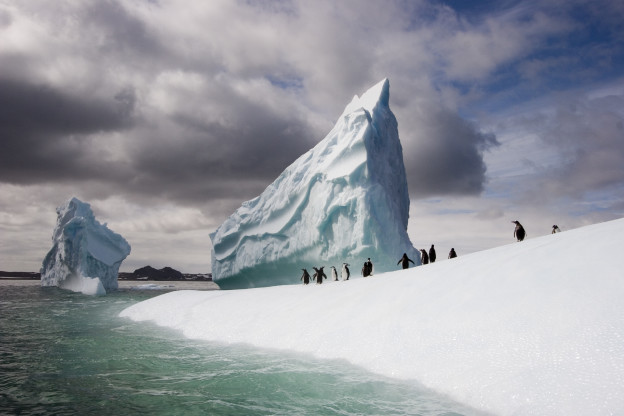Here’s the sobering news, the climate crisis is worse than you think. Though it is often presented as a problem with a known solution, in reality, civilization is facing a dire situation with no realistic scenario that will avoid profound consequences. Consequences for civilization, and the fabric of life itself.
On top of this, the situation is from another time, literally. We have already changed the atmosphere to a composition that last existed before there were humans on the planet. The ice we are melting is millions of years old, and holds the memory of a time before humanity. The coal and oil represents half a billion years of plants storing up the sun’s energy. We have unleashed a story way older than humankind. Way, way older than civilization.
In short, we have a civilizational koan. If we are lucky, and ride this out, we will have to collectively transform into something we would not recognize today. We will have to come at it from a place beyond our current imagination. Imagine the microbes in your stomach becoming aware of the shape of the whole human body, and then initiating a transformation into a plant. That’s the order of challenge before us.
So, if we are going to bring the best of ourselves to the situation, the best of humanity to the moment, we are going to have to come at it from another time. Literally.
All of which is rather abstract and metaphysical, which is what brings us to art. Art is the realm in which we can naturally engage the abstract and discover something new. The artist is a role in society who can be taken seriously when making the abstract tangible.
Climate Art is more than just art, and creativity. It is more than just expanding awareness. More than just communicating ideas. Climate Art is the intersection of Art and the Climate Crisis, so must be about engaging the subject directly and building capacity in the qualities and talents necessary for the scale of challenge facing humanity and the planetary system as a whole. It is ambitious. The Climate Art movement has to outcompete paradigms. The Climate Art charge is to create an engagement of the situation so compelling that it simply trumps our current distractions and boxes of reality. Imagine an art movement that rivals religion and economics in defining our daily reality.
So, what are the characteristics of Climate Art? And where do we see it now?
One obvious beginning is the art of witnessing the melting of our geologic ice. The photographers and filmmakers such as James Balog, Sebastian Copeland and others, who are documenting our disappearing glaciers and landscapes of ice before they are no longer intact.
Then there is aerial artist John Quigley, who has done dozens of human sculpture images in threatened and awesome landscapes related to the climate crisis—800 Intuit on the sea ice in the Arctic, indigenous peoples in the Amazon, middle school students in the snows of Park City. The events have not only allowed people to become part of this epic story, they have the also provided the example and inspiration for global days of expression.
Another example of Climate Art is the work of Bill McKibben and 350.org, advocating for the impossible goal of divesting from the fossil fuel industry, a grand public opera if there ever was one. It is Climate Art, because it enrolls all in the story as active participants.
Other good news for Climate Art includes the growing body of “no spectator” art experiences such as Burning Man, which require participation, practicing co-creation. But, more importantly, they demonstrate that new, unpredicted realities can work, and even be more compelling than the current “default reality”.
These, however, are just the beginning threads. The promise of the Climate Art movement is to catalyze an evolution in humanity, perhaps even escaping the paradigm of civilization. It is to let go into the unknown and surprise ourselves creating impacts that last millennia. There is not time to waste.

